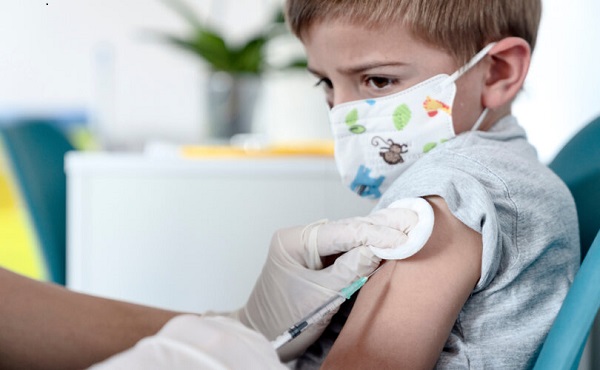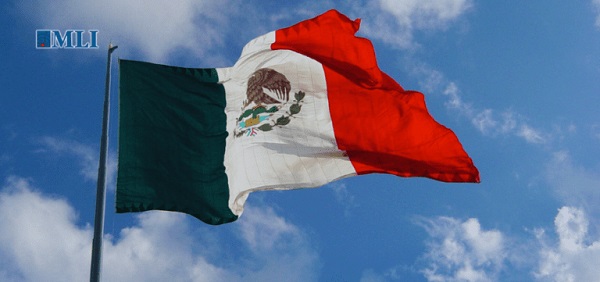Alberta
Big boost for energy companies working on emission reduction innovations

From the Province of Alberta
In October 2019, Emissions Reduction Alberta (ERA) launched the Natural Gas Challenge and invited technology developers to share project concepts for innovation opportunities in Alberta’s natural gas industry.
Alberta’s government is providing $58 million through ERA to support this opportunity to create jobs in the natural gas sector.
Funding recipients include a project that uses artificial intelligence to locate and measure methane emissions, and a project to produce renewable natural gas from biogas at an agricultural facility that will be the first of its kind in Alberta.
The 20 new projects have the potential to reduce a cumulative one million tonnes of emissions by 2030 – the same as taking about 750,000 cars off Alberta’s roads. These projects will also get Albertans back to work by creating more than 750 new jobs when they are needed most.
“Alberta is already a leader when it comes to our environmental footprint, and our ongoing work with Emissions Reduction Alberta will help us become even better.”
Projects were selected through ERA’s competitive review process. Experts in science, engineering, business development, commercialization, financing, and greenhouse gas quantification reviewed 117 submissions and chose projects based on the strongest potential for success.
“With Alberta’s 300-year supply of affordable natural gas, a technically skilled workforce and world-class environmentally responsible facilities, there is tremendous opportunity for Alberta to compete with international markets. Funding opportunities like this, in partnership with Emissions Reduction Alberta, are critical to attracting investments that will grow Alberta’s economy by reducing upfront costs, while reducing our province’s share of global emissions.”
Government funds ERA through the Technology Innovation and Emissions Reduction (TIER) system. TIER is an improved system to help energy-intensive facilities find innovative ways to reduce emissions and invest in clean technology to stay competitive and save money. Facilities can pay into a TIER Fund, which is used for innovative and cleaner Alberta-based projects like those selected under the Natural Gas Challenge.
ERA’s funding model requires that every dollar committed to an initiative is matched or exceeded by additional investments, which ensures there is a market demand for the technology. Government’s $58-million investment through ERA has been more than doubled by private and public investment to stimulate the economy, lower emissions and create jobs, leading to a total of $155 million in funding.
“Investing in the next wave of technological advancements will help Canada’s natural gas industry achieve new efficiencies, reduce costs, and continue to drive world-leading environmental performance.”
A complete list of the successful Natural Gas Challenge projects can be found here.
“We are grateful for ERA’s support to help fund Canadian Natural’s ALT-FEMP project. By working together, we will develop and pilot technologies that can be adopted across the industry to enable early detection of methane emissions through cost-effective methods, ultimately accelerating industry’s reductions in greenhouse gas emissions.”
“This project is an important first step for Alberta, which has all the ingredients to be a leader in the hydrogen economy – including the ability to produce a near zero-emission hydrogen at a lower cost than most jurisdictions in the world.”
Quick facts
- In 2018, Alberta produced almost 70 per cent of the marketable natural gas in Canada.
- ERA works with government, industry and innovators to support technologies that reduce greenhouse gas emissions.
- Since 2009, ERA has committed $607 million in funds from industrial carbon pricing toward 183 projects worth $4.1 billion that are reducing emissions, keeping industries competitive, and leading to new investment opportunities.
- These 183 projects are estimated to deliver cumulative reductions of 34.8 million tonnes of emissions by 2030.
If successful, these technology innovations will lead to cumulative GHG reductions of almost one million tonnes of CO2e by 2030—equivalent to the GHG emissions from 750,000 passenger vehicles driven for one year. It is anticipated these projects will also deliver approximately 760 new jobs.
Funding is being sourced from the carbon price paid by Large Final Emitters in Alberta through the Technology Innovation and Emissions Reduction (TIER) fund.
The following projects were selected for funding:
UPSTREAM PROJECTS:
MultiSensor Canada Inc.
Methane Imaging Solution for Continuous Leak Detection and Quantification for Tank Emissions and Facility Monitoring
Total project value: $3,200,000 | ERA commitment: $1,600,000
Permanent installation and demonstration of an infrared camera at 100 well sites to provide continuous leak detection and quantification for tank emissions and facility monitoring.
Qube Technologies
Emissions Reductions Through Artificial Intelligence
Total project value: $16,200,000 | ERA commitment: $4,000,000
Deployment of an industrial device designed to collect large quantities of data to use artificial intelligence and machine learning techniques to better quantify, locate, and classify emissions.
University of Calgary:
Field-Scale Deployment and Acceleration of Made-In-Alberta Technology for Fugitive Emissions Detection and Reduction
Total project value: $3,200,000 | ERA commitment: $1,600,000
Full-scale, field pilot of a new vehicle-based technology designed for equipment-level emissions screening to support effective regulatory leak detection and repair.
Canadian Natural Resources Limited
Fugitive Emissions Study Using Aerial Detection Technology
Total project value: $1,900,000 | ERA commitment: $930,000
Pilot project of both aerial screening technology and ground-based detection at conventional oil and gas facilities to validate technology performance and inform a broader Alternative Fugitive Emissions Management Program (FEMP).
Challenger Technical Services
Multi Component Downhole Injection System
Total project value: $2,600,000 | ERA commitment: $1,000,000
Development, testing, and validation of a multicomponent downhole injection system that uses epoxy resins to rapidly seal leaking oil and gas wells and eliminate surface casing vent flow.
Petroleum Technology Alliance Canada (PTAC)
Affordable Zero-Emission Fail-Safe Electric Dump Valve Actuator (EDVA) Phase 2
Total project value: $2,200,000| ERA commitment: $550,000
Applied research, prototype design and development, and field pilot testing of an electrically-driven valve actuator that is more compact, powerful, and lower maintenance than alternative pneumatic options.
Kinitics Automation Limited
Valve Actuator for Gas Producers
Total project value: $1,100,000 | ERA commitment: $550,000
Testing a novel electric actuator at 15 well sites in Alberta to validate the technology as a cost effective, technically viable alternative to eliminate venting from established pneumatic devices.
Westgen Technologies Inc
Unlocking EPOD Economic Zero Bleed Pneumatic Instrument Air Retrofit Solution
Total project value: $4,000,000 | ERA commitment: $1,300,000
Demonstration of a solar-hybrid power generation system for remote well sites to provide reliable electricity to prevent gas venting from pneumatic devices in a cost-effective manner.
Modern Wellbore Solutions
Demonstration of a Full-Scale Multilateral Junction Assembly
Total project value: $12,100,000 | ERA commitment: $3,500,000
Full-scale deployment of a multilateral junction tool assembly that will allow natural gas operators to drill, complete, and operate multi-branched wells for unconventional reservoirs. The technology reduces emissions by enabling lateral junctions rather than requiring separate wells.
Tourmaline Oil Corp.
Natural Gas Mobile Unit for Drilling Rig Power Generation
Total project value: $8,000,000 | ERA commitment: $3,200,000
Pilot demonstration of a plug and play, mobile power generation system for drilling rigs that uses smart energy to automatically start and stop generators to match the power demand of the rig.
DOWNSTREAM AND VALUE-ADDED PROJECTS:
ATCO Gas and Pipelines Ltd.
Fort Saskatchewan Hydrogen Blending
Total project value: $5,700,000 | ERA commitment: $2,800,000
Pilot project to test hydrogen blending in ATCO’s Fort Saskatchewan natural gas distribution system. The project will source and test equipment and determine applicability of existing codes, standards, and legislation.
Ekona Power Inc.
Development and Field Testing of a Tri-Generation Pyrolysis (TGP) System for Low-cost, Clean Hydrogen Production
Total project value: $13,800,000 | ERA commitment: $5,000,000
Prototyping a new approach to converting natural gas to hydrogen and a solid carbon by-product representing a new pathway to produce zero-emissions hydrogen, electricity, and other products by decarbonizing natural gas.
Standing Wave Reformers Inc.
A New Wave in Hydrogen Production
Total project value: $8,200,000 | ERA commitment: $3,000,000
Design optimization, system integration, pilot demonstration, techno-economic analysis, and advancement of commercial deployment plans for a technology system to decarbonize natural gas.
ATCO Gas and Pipelines Ltd.
ATCO and Future Fuel RNG
Total project value: $15,900,000 | ERA commitment: $7,900,000
First-of-its-kind commercial demonstration to produce renewable natural gas (RNG) to be sold and used within the province in Compressed Natural Gas (CNG) fleet vehicles and commercial applications.
Sustainitech Inc.
Co-Locating Natural Gas and Indoor Agriculture for Alberta’s Future
Total project value: $17,900,000 | ERA commitment: $5,000,000
Design, construction, and operation for a first-of-kind commercial deployment of a modular farming system that combines automation, hydroponics, adsorption cooling, and advanced lighting to grow crops.
Enersion Inc.
Greenest Natural Gas-Powered Quad-generation with a 41% GHG Reduction
Total project value: $3,800,000 | ERA commitment: $1,800,000
Technology that uses natural gas to generate electricity, cooling, and heating in an integrated package for multiple applications, including industrial, agricultural, commercial, and residential sectors
Stone Mountain Technologies, Inc.
Demonstration of Thermally Driven Heat Pumps for Residential Heating Applications
Total project value: $2,000,000 | ERA commitment: $990,000
Design and prototyping of technology that uses natural gas to drive a heat pump cycle. Unlike electrically-driven heat pumps, the technology is ideal for cold climates.
Anax Power
Turboexpander Project
Total project value: $6,200,000 | ERA commitment: $2,400,000
Installation and operation of technology that provides clean, distributed electricity from the pressure and flow of natural gas without combustion.
Innovative Fuel Systems
Advanced Dual-Fuel System Commercial Demonstration
Total project value: $2,800,000 | ERA commitment: $1,200,000
Commercial validation of technology that allows heavy duty truck engines to displace up to 50 per cent of their diesel with cleaner burning natural gas.
Converting Landfill Gas to Renewable Natural Gas
Total project value: $25,000,000 | ERA commitment: $10,000,000
The project will explore opportunities to upgrade landfill gas (LFG) at Clover Bar Landfill and inject it into Alberta’s natural gas system as renewable natural gas (RNG). Stakeholders in the Clover Bar Landfill, the City of Edmonton and Capital Power, are exploring these possible opportunities.
All recipients are required to produce a final outcomes report that will be shared publicly for the broader benefit of Alberta. All projects involve field piloting, demonstration, or commercial deployment of technology within the province.
Click the links below for more details on ERA’s Natural Gas Challenge:
- Full Project Proposal Guidelines
- Call for Expressions of Interest Guidelines
- Eligible Expense and Cost Instructions
- Privacy, Confidentiality, Data, and Security Policy
- Frequently Asked Questions
- Watch the Informational Webinar
- Learn more about ERA’s funding process.
WHY TARGET THE NATURAL GAS VALUE CHAIN?
Natural gas is a critical resource, providing heat and power for Alberta’s residential, commercial, and industrial sectors. It is the least GHG emitting of traditional fossil fuels, and a global shift toward natural gas from coal- and oil‑based resources is underway.
Canada is the fourth largest natural gas producer in the world, with net exports totaling $6.1 billion in 2018. Alberta produces almost 70 per cent of the marketable natural gas in the country. In 2017, the province emitted 35 million tonnes of CO2e from natural gas production and processing. A significant opportunity exists to improve cost competitiveness along Alberta’s natural gas value chain and reduce GHG emissions.
The Government of Alberta is committed to revitalizing Alberta’s natural gas sector. The province is developing and implementing a robust strategy with key recommendations from the 2018 Roadmap to Recovery Report, a document advising the government on reviving Alberta’s natural gas industry.
Alberta
On gender, Alberta is following the science

Despite falling into disrepute in recent years, “follow the science” remains our best shot at getting at the truth of the physical sciences.
But science, if we are to place our trust in it, must be properly defined and understood; it is at its essence an ever-changing process, a relentless pursuit of truth that is never “settled,” and one that is unafraid to discard old hypotheses in the face of new evidence.
And it is in this light—in the unforgiving glare of honest science—that Alberta Premier Danielle Smith’s three new legislative initiatives around gender policy are properly understood, notwithstanding the opprobrium they’ve attracted from critics.
Bill 26, the Health Statutes Amendment Act, proposes to prohibit the prescription of puberty blockers and cross-gender hormones for the treatment of gender dysphoria to youth aged 15 and under. It would allow minors aged 16 and 17 to begin puberty blockers and hormone therapies for gender “reassignment” and “affirmation” purposes only with parental, physician, and psychologist approval. The bill also prohibits health professionals from performing sex reassignment surgeries on minors.
Bill 27, the Education Amendment Act, seeks to enshrine parents’ rights to be notified if their kids change their names/pronouns at school, and it gives parents the right to “opt in” to what sort of gender and sex education their kids are exposed to in school.
And Bill 29, the Fairness and Safety in Sports Act, is designed to protect females in sports by ensuring that women and girls can compete in biological female-only divisions, while supporting the formation of co-ed opportunities to support transgender athletes.
Each of these initiatives is entirely reasonable, given what we know of the science underpinning “gender care,” and of the undeniable advantages that a male physique confers upon biological males competing in sports.
The notion that the trifecta of puberty blockers, cross-gender hormones, and revisionist surgery is a pathway to good health was a hypothesis initially devised by Dutch researchers, who were looking to ease the discomfort of transgender adults struggling with incongruence between their physical appearance and their gender identities. As a hypothesis, it was perhaps reasonable.
But as the UK’s Cass Review exposed in withering detail last spring, its premises were wholly unsupported by evidence, and its implementation has caused grievous harm for youth. As Finnish psychiatrist Riittakerttu Kaltiala, one of the architects of that country’s gender program, put it last year, “Gender affirming care is dangerous. I know, because I helped pioneer it.”
It’s no accident, then, that numerous European jurisdictions have pulled back from the “gender affirming care” pathway for youth, such as Sweden, Finland, Belgium, the Netherlands, and the United Kingdom.
It makes perfect sense that Canadians should be cautious as well, and that parents should be apprised if their children are being exposed to these theories at school and informed if their kids are caught up in their premises.
Yet the Canadian medical establishment has remained curiously intransigent on this issue, continuing to insist that the drug-and-surgery-based gender-affirming care model is rooted in evidence.
Premier Smith was asked by a reporter last month whether decisions on these matters aren’t best left to discussions between doctors and their patients; to which she replied:
“I would say doctors aren’t always right.”
Which is rather an understatement, as anyone familiar with the opioid drug crisis can attest, or as anyone acquainted with the darker corners of medical history knows: the frontal lobotomy saga, the thalidomide catastrophe, and the “recovered memories of sexual abuse” scandal are just a few examples of where doctors didn’t “get it right.”
As physicians, we advocate strongly for self-regulation and for the principle that medical decisions are private matters between physicians and patients. But self-regulation isn’t infallible, and when it fails it can be very much in the interests of the public—and especially of patients—for others to intervene, whether they be journalists, lawyers, or political leaders.
The trans discussion shouldn’t be a partisan issue, although it certainly has become one in Canada. It’s worth noting that Britain’s freshly elected Labour Party chose to carry on with the cautious approach adopted by the preceding administration in light of the Cass Review.
Premier Smith’s new polices are eminently sensible and in line with the stance taken by our European colleagues. None of her initiatives are “anti-trans.” Instead, they are pro-child, pro-women, and pro-athlete, and it’s difficult to see how anyone can quibble with that.
Dr. J. Edward Les, MD, is a pediatrician in Calgary, senior fellow at the Aristotle Foundation for Public Policy, and co-author of Teenagers, Children, and Gender Transition Policy: A Comparison of Transgender Medical Policy for Minors in Canada, the United States, and Europe.
Alberta
Alberta mother accuses health agency of trying to vaccinate son against her wishes

From LifeSiteNews
Alberta Health Services has been accused of attempting to vaccinate a child in school against his parent’s wishes.
On November 6, Alberta Health Services staffers visited Edmonton Hardisty School where they reportedly attempted to vaccinate a grade 6 student despite his parents signing a form stating that they did not wish for him to receive the vaccines.
“It is clear they do not prioritize parental rights, and in not doing so, they traumatize students,” the boy’s mother Kerri Findling told the Counter Signal.
During the school visit, AHS planned to vaccinate sixth graders with the HPV and hepatitis B vaccines. Notably, both HPV and hepatitis B are vaccines given to prevent diseases normally transmitted sexually.
Among the chief concerns about the HPV vaccine has been the high number of adverse reactions reported after taking it, including a case where a 16 year-old Australian girl was made infertile due to the vaccine.
Additionally, in 2008, the U.S. Food and Drug Administration received reports of 28 deaths associated with the HPV vaccine. Among the 6,723 adverse reactions reported that year, 142 were deemed life-threatening and 1,061 were considered serious.
Children whose parents had written “refused” on their forms were supposed to return to the classroom when the rest of the class was called into the vaccination area.
However, in this case, Findling alleged that AHS staffers told her son to proceed to the vaccination area, despite seeing that she had written “refused” on his form.
When the boy asked if he could return to the classroom, as he was certain his parents did not intend for him to receive the shots, the staff reportedly said “no.” However, he chose to return to the classroom anyway.
Shortly after, he was called into the office and taken back to the vaccination area. Findling said that her son then left the school building and braved the sub-zero temperatures to call his parents.
Following his parents’ arrival at the school, AHS claimed the incident was a misunderstanding due to a “new hire,” attesting that the mistake would have been caught before their son was vaccinated.
“If a student leaves the vaccination center without receiving the vaccine, it should be up to the parents to get the vaccine at a different time, if they so desire, not the school to enforce vaccination on behalf of AHS,” Findling declared.
Findling’s story comes just a few months after Alberta Premier Danielle Smith promised a new Bill of Rights affirming “God-given” parental authority over children.
A draft version of a forthcoming Alberta Bill of Rights provided to LifeSiteNews includes a provision beefing up parental rights, declaring the “freedom of parents to make informed decisions concerning the health, education, welfare and upbringing of their children.”
-

 Brownstone Institute2 hours ago
Brownstone Institute2 hours agoThe Most Devastating Report So Far
-

 Economy14 hours ago
Economy14 hours agoCOP 29 leaders demand over a $1 trillion a year in climate reparations from ‘wealthy’ nations. They don’t deserve a nickel.
-

 Alberta12 hours ago
Alberta12 hours agoOn gender, Alberta is following the science
-

 Energy13 hours ago
Energy13 hours agoOttawa’s proposed emission cap lacks any solid scientific or economic rationale
-

 Bruce Dowbiggin1 hour ago
Bruce Dowbiggin1 hour agoCHL Vs NCAA: Finally Some Sanity For Hockey Families
-

 Brownstone Institute1 day ago
Brownstone Institute1 day agoFirst Amendment Blues
-

 Crime2 days ago
Crime2 days agoMexican cartels are a direct threat to Canada’s public safety, and the future of North American trade
-

 Business2 days ago
Business2 days agoDEI gone?: GOP lawmakers prep to clean house in federal government





